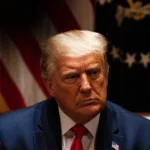The European Central Bank (ECB) is expected to announce its final interest rate cut of 2024 on Thursday, with economists forecasting a 25-basis-point reduction rather than a more aggressive 50-basis-point cut. This decision comes as the ECB aims to navigate a complex global landscape influenced by factors like Donald Trump’s potential return to the White House and his threats of sweeping trade tariffs.
The ECB has already lowered its key rate from 4% to 3.25% in three incremental cuts throughout 2024. This rate-cutting cycle has included three 25-basis-point reductions between June and October, reflecting a cautious approach to monetary loosening amid a backdrop of rising labor costs and a still uncertain economic outlook for the euro zone.
Guidance for 2025 to Focus on Neutral Monetary Policy
The forthcoming ECB meeting will not only set the stage for the last rate cut of the year but also provide crucial guidance for 2025, as the institution releases its quarterly macroeconomic projections. These forecasts will include growth and inflation expectations amidst the uncertain global impact of Trump’s potential economic policies.
According to Sylvain Broyer, Chief EMEA Economist at S&P Global Ratings, while inflation has recently risen back above target to 2.3% in November from 2% in October, the ECB is in no rush to push for a deeper rate cut:
“There is no need to hurry up at this stage for the ECB. Inflation, at least over the short term, is under control. But as long as labor costs increase above productivity, the ECB should remain on the cautious side, or on the wait-and-see side for cutting rates,” he noted in an interview on CNBC’s “Squawk Box Europe.”
Broyer predicts a 25-basis-point cut in December, followed by further rate reductions at a steady pace throughout 2025 to reach a neutral monetary policy stance that neither stimulates nor restricts growth.
Caution Amid Geopolitical and Economic Uncertainty
Money market pricing currently suggests limited chances of a more substantial cut, with around 29 basis points worth of reductions priced in for December. Economists argue that November’s uptick in negotiated wage growth warrants caution, particularly as headline inflation rose above the ECB’s target to 2.3%.
Forecasts from Danske Bank suggest a “benign market reaction” even if ECB President Christine Lagarde adopts a more dovish tone. They expect the ECB to opt for a smaller move, citing the necessity of maintaining cautious messaging given the volatile economic conditions in the euro zone.
According to Bank of America Global Research, the path of rate cuts should lead to the deposit facility rate reaching 1.5% by September next year. They argue that a neutral stance is essential to support economic stability amidst a period of subdued growth, potentially requiring the ECB to skip meetings in 2025 to reach that target.
Geopolitical Factors and the Global Impact of Trump’s Policies
The geopolitical backdrop remains a critical factor in shaping the ECB’s strategy, as the euro zone braces for a year of significant challenges. Carsten Brzeski, Global Head of Macro for ING Research, highlighted the potential impact of Trump’s economic policies, stating:
“The U.S. under Trump is set to attract more investment from Europe by cutting taxes, deregulating, and creating a more business-friendly environment. This could be more damaging to the euro zone than tariffs, potentially leading to protectionist measures in response.”
The ECB’s 2025 outlook includes a cautious stance, with risks from geopolitical tensions and economic divergence between northern and southern Europe. While southern economies might benefit from a post-pandemic tourism boom, political instability in Germany and France poses challenges, creating a need for careful navigation of policy responses.
A potential upside surprise for the euro zone could come from a delayed impact of increased real incomes and savings, offering robust support across 2025. Conversely, the downside scenario envisions a protectionist backlash to Trump’s policies, potentially plunging global trade into a full-blown trade war.





